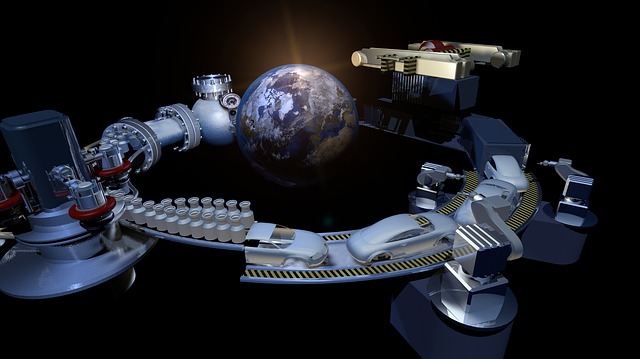Project Aims
The manufacturing sector is increasingly becoming global, with companies that design and manufacture components, parts and finished products for other companies, exploiting expertise, raw materials, manufacturing capabilities, cost, and an
efficient supply chain that spans across the globe. It is hence not a coincidence that industry is undergoing the 4th industrial revolution (IND4.0). Computers, automation systems, robotics and other technologies are being connected
together through the internet-of-things (IOT) to setup what are known as Cyber-Physical Systems (CPS), aimed at enhancing operations, flexibility and a number of other key business performance metrics. This IND4.0 coupled with a shift towards global manufacturing (GM) or global digital manufacturing (GDM) is increasingly changing the way companies do business. It is consequently also influencing the ‘skills set’ they expect from their workforce to cope with this new challenge. The EC report 'A New Skills Agenda for Europe' states that 39% of companies currently have difficulties finding suitably skilled ICT professionals. At the same time, EC reports clearly reveal that SMEs accounting to about 70-85% of the workforce in different European Economic Area (EEA) countries. Thus, current and future workers employed across EEA countries, in either large countries or small island states such as IS and MT, or by micro-SMEs, SMEs and/or multinationals, need to have
a set of skills and competences allowing them to adapt to working methods and opportunities arising from IND4.0 and GDM. In order to proactively take action towards reduce this skills mismatch, there is a need to urgently prepare employees
to be ready for IND4.0 jobs and GDM working environments.
Thus, the main aim of the MAGIC project is to develop a novel joint curriculum and course by which HEI trainers can attract and help first cycle students (BSc) to learn in an integrated way about IND4.0, entrepreneurship and GDM. To achieve this aim, the MAGIC project will have these objectives:
*OB1: To understand IND4.0 and GM training needs of employees in the partner countries and in particular SMEs; Ind. 1 training needs report
*OB2: To develop a HEI Curriculum, a set of case-studies, an innovative joint training module, all available on the a new MAGIC digital Open Education Resource (OER) platform, for exploiting IND4.0 to foster GM, including entrepreneurship; this
will be aimed at the first cycle of studies (BSc.) to modernize existing curricula for UPB and UNAK, but it is intended to be used also at SMEs level to raise awareness of the importance of GDM sector; Ind.: 1 joint curriculum; min. 6 case studies; 1
joint module; 1 OER platform
*OB3: To perform scientific research on the impact of Additive Manufacturing for GDM; Ind.: min. 2 peer reviewed articles in published Scientific Conference Proceedings or Journals
Target Groups (TG):
TG1: HEI Trainers as these will be able to exploit the MAGIC curriculum, training material and OER to help learners and in particular those aiming to take up careers with SMEs, to acquire IND4.0 skills fostering global manufacturing;
TG2: HEI learners that have a need to acquire skills in GDM facilitated through IND4.0 including ROMA citizens;
TG3: HEI stakeholders sector including entrepreneurs, policy makers and managers.
TG4: SMEs that will benefit from the enhanced knowledge of graduates in term of GDM in the context of IND4.0
In order to embrace IND4.0 working environments in a company, the training and qualifications of its skilled workers must be adapted to meet the new requirements of this interdisciplinary approach. For example, service engineers not only need
practical mechatronics experience but also knowledge of IT infrastructures so that they can work at a high level to rectify machine standstills as quickly as possible. Interdisciplinary competencies are growing in importance, which is why it is
necessary to adapt the skills and abilities that are taught for the various trades. Hence, the needs of the target groups, related to IND4.0 and GM are: Increased digital skills; Knowledge about global manufacturing, from a multi disciplinary
perspective, rather than specific, narrow fields and competences; Knowledge on existing and successful and continuously evolving IND4.0 technologies such as additive manufacturing (3D printing), Reverse Engineering, Virtual and Augmented
reality, etc.; Adapting to a continuously evolving working domain (such as manufacturing); Entrepreneurial spirit for fostering new jobs and services related to IND4.0 and GM; Training persons for the future jobs since it is estimated that
more than 30% of types of jobs in 30 years do not exist today). This will help ensure a person’s flexibility to adapt to new IND4.0 and GM working environments and continuously evolving digital technologies.











